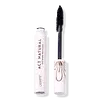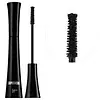Colourpop Act Natural Mascara Versus IT Cosmetics Superhero Elastic Stretch Volumizing and Lengthening Mascara
What's inside
What's inside
 Key Ingredients
Key Ingredients

 Benefits
Benefits

 Concerns
Concerns

 Ingredients Side-by-side
Ingredients Side-by-side

Water
Skin ConditioningOryza Sativa Bran Wax
Skin ConditioningCyclopentasiloxane
EmollientHydrogenated Olive Oil Stearyl Esters
Emulsion StabilisingAlcohol Denat.
AntimicrobialCopernicia Cerifera Wax
Palmitic Acid
EmollientStearic Acid
CleansingTriethanolamine
BufferingAcacia Senegal Gum
MaskingEuphorbia Cerifera Wax
Panthenol
Skin ConditioningPhenoxyethanol
PreservativeVp/Vinyl Alcohol Copolymer
HumectantAminomethyl Propanediol
BufferingChlorphenesin
AntimicrobialAscorbyl Palmitate
AntioxidantIron Oxides
Water, Oryza Sativa Bran Wax, Cyclopentasiloxane, Hydrogenated Olive Oil Stearyl Esters, Alcohol Denat., Copernicia Cerifera Wax, Palmitic Acid, Stearic Acid, Triethanolamine, Acacia Senegal Gum, Euphorbia Cerifera Wax, Panthenol, Phenoxyethanol, Vp/Vinyl Alcohol Copolymer, Aminomethyl Propanediol, Chlorphenesin, Ascorbyl Palmitate, Iron Oxides
Water
Skin ConditioningCopernicia Cerifera Cera
EmollientCyclopentasiloxane
EmollientOryza Sativa Cera
Skin ConditioningHydrogenated Olive Oil Stearyl Esters
Emulsion StabilisingAlcohol Denat.
AntimicrobialStearic Acid
CleansingPalmitic Acid
EmollientTriethanolamine
BufferingAcacia Senegal Gum
MaskingEuphorbia Cerifera Cera
AstringentPropylene Glycol
HumectantPhenoxyethanol
PreservativeVp/Va Copolymer
Aminomethyl Propanediol
BufferingIsopropyl Alcohol
SolventPolyvinyl Alcohol
Chlorphenesin
AntimicrobialEthylhexylglycerin
Skin ConditioningTocopheryl Acetate
AntioxidantBiotin
AntiseborrhoeicGlycerin
HumectantT-Butyl Alcohol
PerfumingButylene Glycol
HumectantHydrolyzed Collagen
EmollientCarbomer
Emulsion StabilisingSodium Lactate
BufferingPolysorbate 20
EmulsifyingPalmitoyl Tripeptide-1
Skin ConditioningPalmitoyl Tetrapeptide-7
Skin ConditioningCI 77499
Cosmetic ColorantWater, Copernicia Cerifera Cera, Cyclopentasiloxane, Oryza Sativa Cera, Hydrogenated Olive Oil Stearyl Esters, Alcohol Denat., Stearic Acid, Palmitic Acid, Triethanolamine, Acacia Senegal Gum, Euphorbia Cerifera Cera, Propylene Glycol, Phenoxyethanol, Vp/Va Copolymer, Aminomethyl Propanediol, Isopropyl Alcohol, Polyvinyl Alcohol, Chlorphenesin, Ethylhexylglycerin, Tocopheryl Acetate, Biotin, Glycerin, T-Butyl Alcohol, Butylene Glycol, Hydrolyzed Collagen, Carbomer, Sodium Lactate, Polysorbate 20, Palmitoyl Tripeptide-1, Palmitoyl Tetrapeptide-7, CI 77499
Ingredients Explained
These ingredients are found in both products.
Ingredients higher up in an ingredient list are typically present in a larger amount.
Acacia Senegal Gum has skin soothing, thickening, and formulation stabilizing properties. It comes from the Acacia tree that is native to sub-Saharan Africa.
Alcohol Denat. is an alcohol with a denaturant property. It is created by mixing ethanol with other additives.
This ingredient gets a bad rep because it is irritating and drying - mostly due to its astringent property. Astringents draw out natural oils in tissue, constricting pores and leaving your skin dried out.
However, alcohol denat. is not all that bad.
Due to its low molecular weight, alcohol denat. tends to evaporate quickly. One study on pig skin found half of applied alcohol evaporated in 10 seconds and less than 3% stayed on skin.
This also helps other ingredients become better absorbed upon application.
Studies are conflicted about whether this ingredient causes skin dehydration. One study from 2005 found adding emollients to propanol-based sanitizer decreased skin dryness and irritation. Another study found irritation only occurs if your skin is already damaged.
Small amounts of alcohol are generally tolerated by oily skin or people who live in humid environments.
The rule of thumb is if this alcohol is near the end of an ingredients list, it will probably not affect your skin much.
Also...
This ingredient has antimicrobial and solvent properties.
The antimicrobial property helps preserve products and increase their shelf life. As a solvent, it helps dissolve other ingredients.
Other types of astringent alcohols include:
Learn more about Alcohol Denat.We don't have a description for Aminomethyl Propanediol yet.
Chlorphenesin is a synthetic preservative. It helps protect a product against bacteria in order to extend shelf life. In most cases, Chlorphenesin is paired with other preservatives such as phenoxyethanol and caprylyl glycol.
Chlorphenesin is a biocide. This means it is able to help fight the microorganisms on our skin. It is also able to fight odor-releasing bacteria.
Chlorphenesin is soluble in both water and glycerin.
Studies show Chlorphenesin is easily absorbed by our skin. You should speak with a skincare professional if you have concerns about using Chlorphenesin.
Learn more about ChlorphenesinCyclopentasiloxane, or D5, is a silicone used to improve texture of products and trap moisture.
D5 is considered lightweight and volatile. Volatile means it evaporates quickly after application. Once evaporated, D5 leaves a thin barrier that helps keep skin hydrated.
It is also an emollient. Emollients help soften the skin and prevent water loss. Silicones create a silky texture in products. D5 helps other ingredients become more spreadable.
Studies show D5 is safe to use in skincare products. We recommend speaking with a skincare professional if you have concerns.
Learn more about CyclopentasiloxaneHydrogenated Olive Oil Stearyl Esters is an oil.
Palmitic Acid is a fatty acid naturally found in our skin and in many plant and animal sources. In cosmetics, it is usually derived from palm oil. It serves many purposes in skincare, acting as a cleanser, emollient, and emulsifier.
As an emollient, palmitic acid helps soften and smooth the skin by preventing water loss. In cleansers, it helps remove oil and dirt while creating foam.
Its emulsifying properties help stabilize products by keeping water and oil-based ingredients from separating.
This may not be suitable for fungal acne-prone skin, as fatty acids like this can sometimes trigger breakouts in sensitive individuals.
Learn more about Palmitic AcidPhenoxyethanol is a preservative that has germicide, antimicrobial, and aromatic properties. Studies show that phenoxyethanol can prevent microbial growth. By itself, it has a scent that is similar to that of a rose.
It's often used in formulations along with Caprylyl Glycol to preserve the shelf life of products.
Stearic Acid is a fatty acid. It is an emollient, emulsifier, and texture enhancer.
As an emollient, stearic acid helps soften skin. It aids the skin's protective barrier by preventing water loss. It also provides a gentle cleansing effect without stripping away natural oils.
Stearic acid may also be used to enhance the texture of products. It can add volume and stabilize ingredients such as water and oil. This can help water and oil ingredients from separating.
Sources of stearic acid include animal or vegetable fats/oils such as coconut or shea. It can be naturally found in butter, cocoa butter, shea butter, vegetable fats, and animal tallow.
This ingredient may not be Malassezia folliculitis, or fungal-acne safe.
Learn more about Stearic AcidTriethanolamine is an emulsifier and pH adjuster. It is created using ethylene oxide and ammonia. This gives Triethanolamine a nitrogen core and a similar scent to ammonia.
As an emulsifier, it prevents ingredients from separating and enhances texture by adding volume to a product.
PH adjusters are common in cosmetic products. The pH of a product can affect the effectiveness of other ingredients. A product with a high pH may also irritate the skin.
Learn more about TriethanolamineWater. It's the most common cosmetic ingredient of all. You'll usually see it at the top of ingredient lists, meaning that it makes up the largest part of the product.
So why is it so popular? Water most often acts as a solvent - this means that it helps dissolve other ingredients into the formulation.
You'll also recognize water as that liquid we all need to stay alive. If you see this, drink a glass of water. Stay hydrated!
Learn more about Water